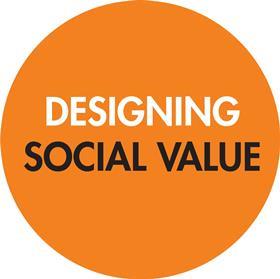Building Design’s client columnist looks at how this might actually happen in the real world - and it involves relationships

Coffee this week with Alan Jones, newly installed as president of the RIBA. I went to talk to him about the Young Architects and Developers Alliance (YADA) that I started with Jane Duncan during her presidency. Conversation about young architects and how to increase opportunities for career progression is always interesting – ours quickly widened to cover the relationship more generally between architects and developers and, most interestingly, how we should be working better to help architects make more money.
You’d think that conversation might be anathema to a developer whose priority is to keep costs as low as possible on a scheme and revenues high. But that’s too simple an analysis. What developers really want is value for money. It’s much less important what something costs if it can provide an exponential increase in the value of the product it delivers. Architects have the greatest capacity of all contributors to a scheme to either reduce its cost or increase the price it will command in the market through their professional design skills. It’s only a lack of understanding and trust between architects and their clients that makes them feel as if they are being treated like just another line in a cost appraisal.
There are a number of factors that contribute to this lack of understanding. First is the Mars and Venus thing that I’ve written about before – these two professions speaking completely different languages with neither side willing enough to make a move to understand better how to find a common tongue. This is toxic and it starts young when architects and developers are training. It’s why we started YADA.

Design and build doesn’t help. It’s a very attractive delivery method for a developer in a time of cost uncertainty – sign a fixed-price deal with a contractor and let them take all the delivery risk. Often the first thing to go is the original scheme architect as the contractor brings on board his own, usually cheaper, delivery architect to finish the job. This is a subject that always raises a heated debate between architects and their clients.
But of course the comfort that a fixed cost brings to a developer in an uncertain cost environment just means that the uncertainty is passed on to the contractor who will do almost anything to protect their profit margin, leading to another kind of uncertainty for the developer – the uncertainty around quality of delivery.
How do you compete when one of the most important differentiators – delivery quality – is effectively out of your hands?
This is something that becomes more important as markets get more uncertain generally. How do you compete when the market is overstuffed with unsold product if one of the most important differentiators – delivery quality – is effectively out of your hands?
So, might this change? Could we see a move relatively quickly – depending on what happens with Brexit – towards a time where developers are looking for ways to exert more control over a finished product, even under the auspices of design-and-build contracts? Could we see contract clauses that see architects retained on a scheme to ensure delivery compliance with original building designs?
Should architects be paid more? I can’t imagine a single architect answering no to that question but, in the real world, how is that going to happen? For architects to earn more, then they simply have to become more important and more indispensable to their clients. And clients have to understand better exactly why that should be so.
In the end it’s all about relationships – building the trust that allows architects to be an integral part of the appraisal planning process; contributing early to the creation of a brief; in the room when problems arise that good design could solve; able to show that good design can deliver greater value to a scheme.
It’s not easy, but the recognition that it’s about building understanding as much as delivering work is a start.
















4 Readers' comments